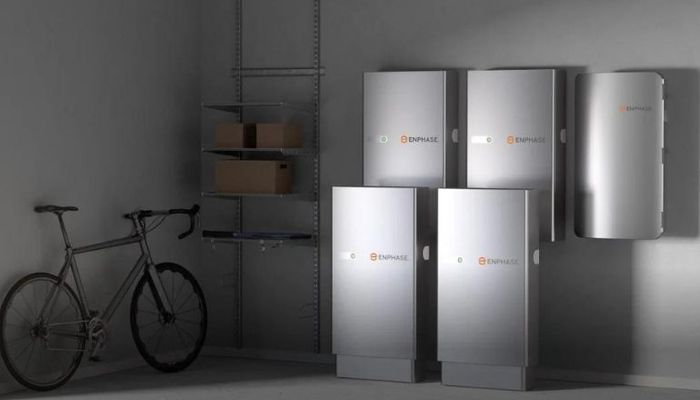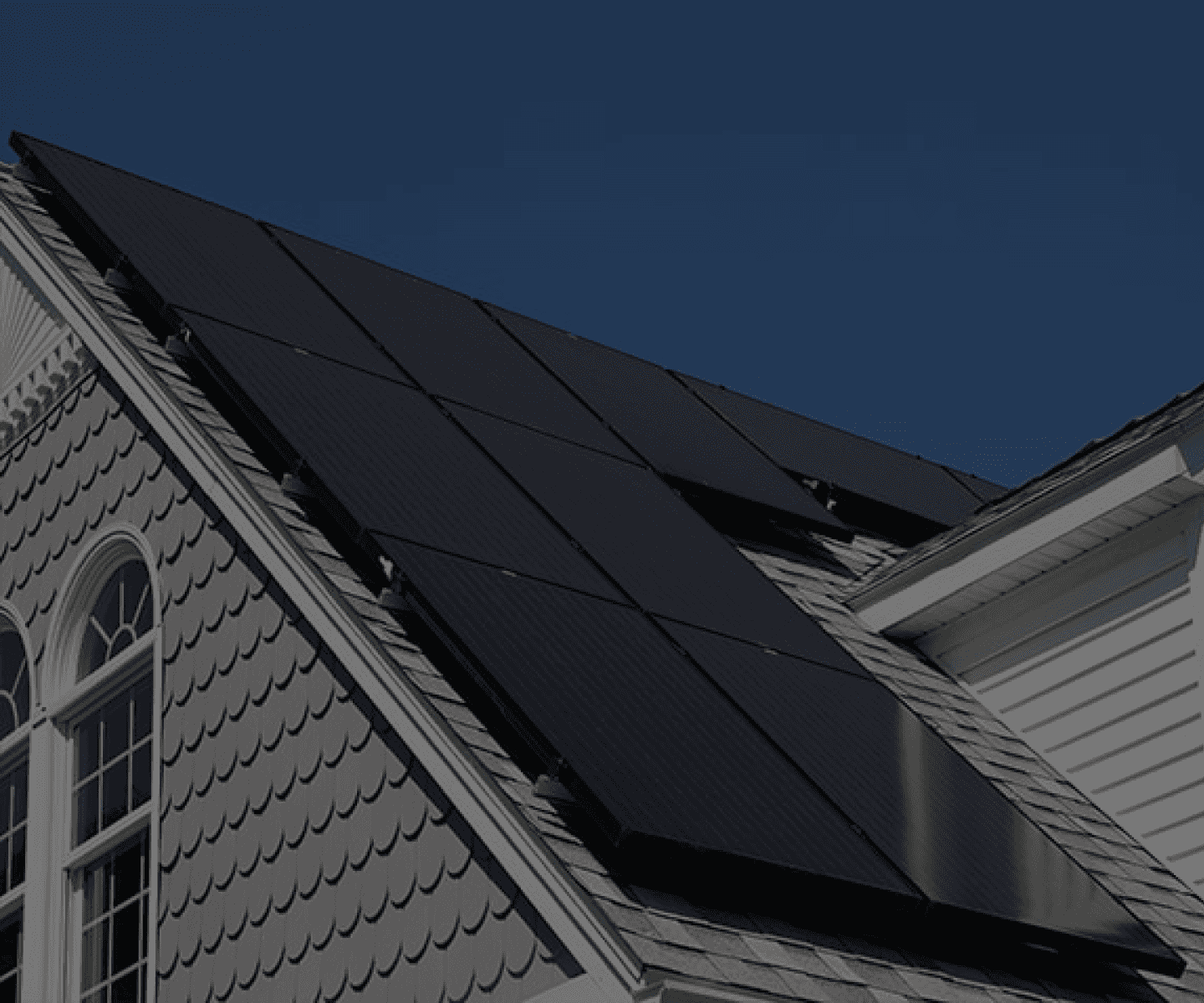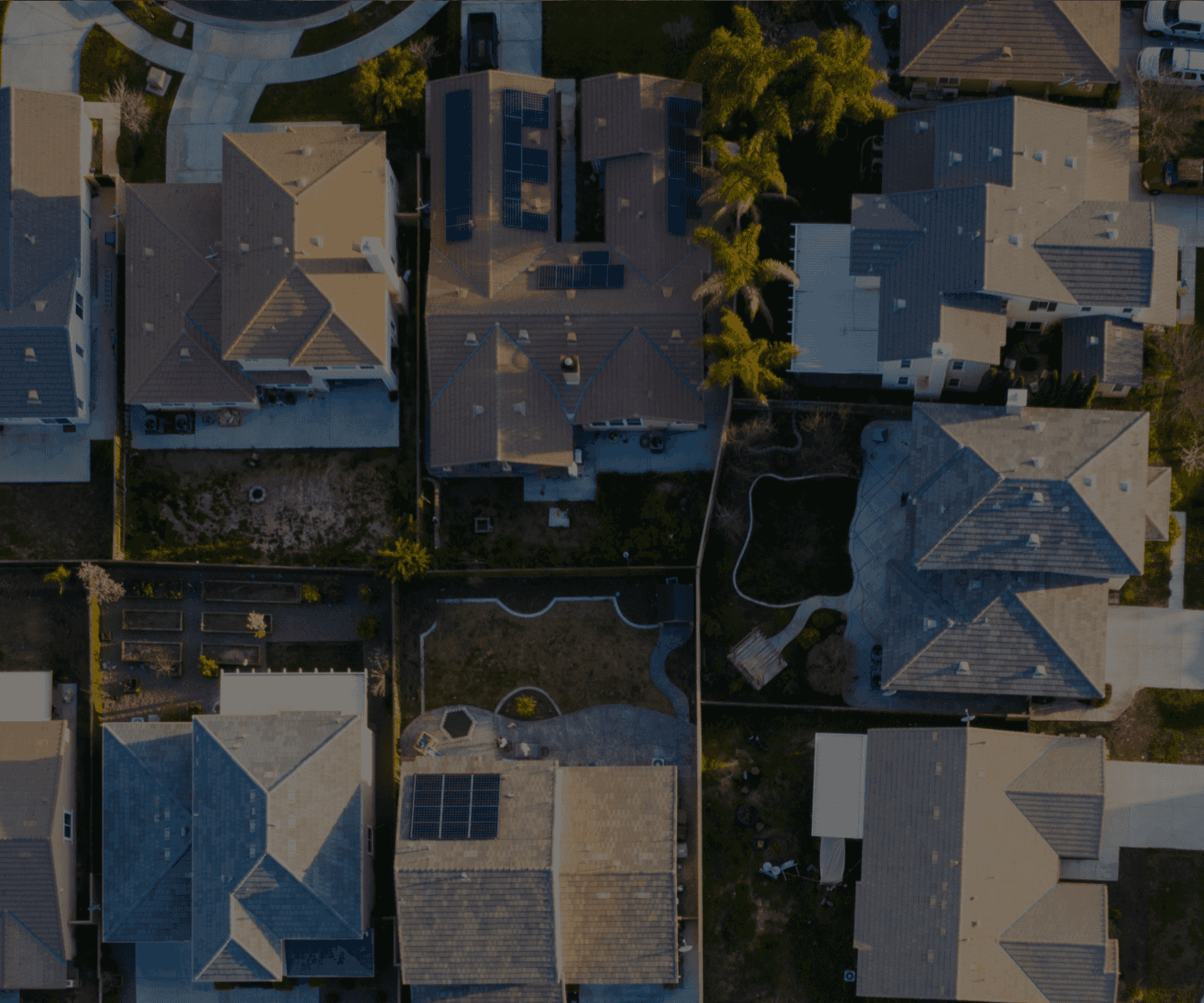Ground Mount vs. Roof Mount: Which Is Best?

Should you mount your solar panels on your roof or build a dedicated ground mount for your array? There’s a lot to consider if you’re deciding between ground-mounted solar panels vs. roof-mounted solar panels.
In this article, we’ll look at the benefits and drawbacks of ground-mount vs. roof-mount solar panel systems to help you decide which option is best for your project.
Comparing Ground-Mount vs. Roof-Mount Solar Panels
The key difference between ground-mount and roof-mount systems is their mounting structures. A standard roof-mount solar panel system uses rails attached to your home’s roof to support the solar panels. With ground-mount systems, you’ll need to use pipes, tubing or poles (dug into your soil) to hold up the solar panels.
Ground-mount and roof-mount solar panels each have advantages and disadvantages. Choosing the right type of mounting system largely depends on your available real estate and site conditions.

Ground Mount Pros:
- Optimize Your System’s Output
- Ideal for Snowy Conditions and Hillside Properties
- Easily Accessible
- Increased Air Flow
Ground Mount Cons:
- Installation Costs
- Complex Permitting Process
- Takes Up Valuable Real Estate

Roof Mount Pros:
- Space Efficiency
- Lower Installation Costs
- Avoids Shading
Roof Mount Cons:
- Imperfect Orientation
- Limited Roof Space
- Less Accessible
- Makes Roof Repair Difficult
- Potential for Roof Leaks
Read on for a deep dive into the pros and cons of each.
Benefits of Ground-Mount Solar Panels
Optimize Your System’s Output
The most significant benefit of installing a ground-mount solar panel system is that you can build your panels in the best available location (depending on how much land you have) and orient them to optimize your system’s energy production.
If you want to produce as much power as possible, it’s best to face your panels due South to allow maximum sun exposure throughout the day.
If you want to maximize your savings, we recommend installing your solar panels facing Southwest to shift your peak production window to later in the day. Many utilities bill higher electricity rates from 4:00 to 9:00 PM, when the demand on the grid is highest. Rotating panels Westward allows you to generate more power when rates are highest, saving you more money.
Ideal for Snowy Conditions and Hillside Properties
With ground-mount solar panels, you can lift the system higher off the ground using pole mounts. This method is ideal for snowy environments, allowing you to keep your array elevated above snow banks in the winter months.
Or, if you live on a hillside and have an abundance of steep land in your backyard, a ground mount system could work well for you, too. Pole mounts are easier to install on steep hills, where anchoring and leveling the racking is much more complex.
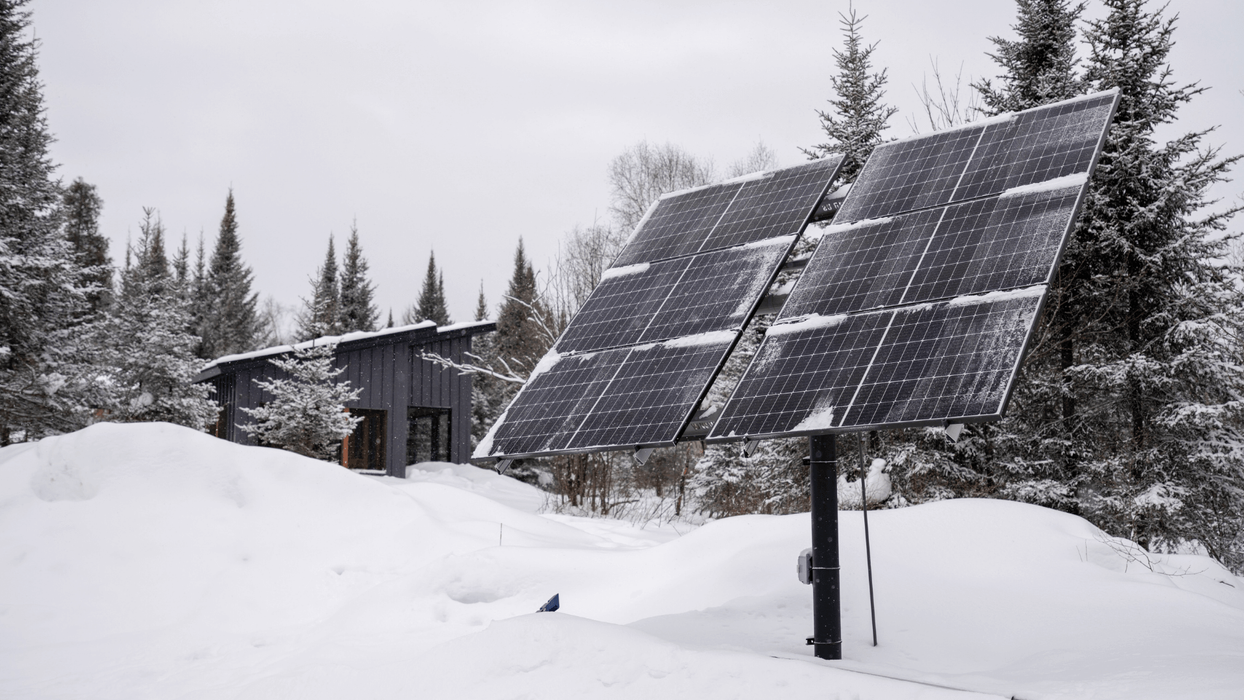
Easily Accessible
Ground-mounted solar panels are much easier to access, with no ladder or safety harness needed. This can make a massive difference if you plan to do a DIY solar installation and play an active role in maintaining your system — think cleaning, sweeping off snow or debris, or repairing or replacing a panel when needed.
Increased Air Flow
Excessive heat can lower solar panel energy production, so having more airflow around a ground-mount array offers an advantage that roof-mount solar panels can’t match.
Disadvantages of Ground-Mount Solar Panels
Installation Costs
One of the biggest drawbacks of ground-mount solar arrays is that they cost more than rooftop systems.
Ground-mount solar systems require a separate foundation to support your array. That means you’ll incur extra materials costs, plus there’s additional labor needed to dig holes, pour concrete footings and build the foundation. You’re essentially creating a brand-new structure.
You’ll also need to dig a trench from the array to the service panel to run conduit and wiring at least 18” underground (required for code compliance). You may need to rent high-powered machinery, which will add to your installation costs.
Complex Permitting Process
In most jurisdictions, ground mount arrays are considered “new construction,” which usually means a more complex permitting process (and higher permitting fees).
Your local building authority will likely ask for additional information on your permit, like structural drawings, property line setback requirements, and load-bearing calculations by a professional engineer.
Since permitting and approval is more complex for these systems, we recommend working with an expert during the installation process. At GoGreenSolar, we help all our ground-mount customers secure their permits and pass their inspection with flying colors. Simply add our solar design and permit service to the purchase of your solar panel system with us.
Takes Up Valuable Real Estate
If you have at least 0.25 to 0.5 acres of available space, you might be a good candidate for ground-mount solar. That said, ground mount arrays take up space on your property that you could use for other home improvement features, like an outdoor grilling area, a tool shed or a swimming pool. If you live on a smaller plot of land, it’s harder to justify a solar system eating up space in your yard.
Ground mounts make more sense for larger properties with more space. If you’re unsure if a ground-mount array will fit on your property, contact us for a free solar design consultation. We use satellite imagery and professional design software to accurately show how your solar system will fit on your property.

Benefits of Roof-Mount Solar Panels
Space Efficiency
One of the best things about roof-mount solar panel systems is that they utilize the existing structure of your home as a foundation for your solar array.
If space is at a premium on your property, it makes the most sense to opt for rooftop solar panels. After all, what else are you using that space for? It’s wise to build your system on your roof, and you can save the yard space for something more useful.
Lower Installation Costs
By securing your racking structure to your roof rafters, you can bypass the need to build a separate load-bearing foundation (ground mount) for your array. You’ll save some money on the installation, both in materials and labor costs.
Important: Most residential homes (especially newer homes) are engineered to handle the additional weight of solar panels and equipment. Before starting, you need to ensure your rooftop can support the weight of the panels with no issues. A roof-mount system may not work for you if you have an older home or property that isn’t as structurally sound. We recommend working with a trusted company like GoGreenSolar that can help you with a structural analysis of your roof as you begin the process.

Avoids Shading
By placing your roof-mount solar panel system higher off the ground, you could reduce the impact of shading from nearby trees and buildings.
Disadvantages of Roof Mount Solar Panels
Imperfect Orientation
Proper orientation is key to optimizing energy production from your solar power system. Solar arrays produce the most power when panels face South, pointing directly at the sun in the middle of the day.
With rooftop solar, it’s unlikely that you’ll get the “perfect” orientation for your system. Since you can’t change the direction of your house, your choices are limited by the space available on your roof.
However, rooftop solar is still viable, even in less-than-ideal conditions. Solar panels on West- or East-facing rooftops still outperform utility power by a wide margin. You can also opt for higher-efficiency panels to increase production, particularly if your roof space is limited (more on this below).
Limited Roof Space
Not all rooftops have the space to accommodate a solar power system. Solar panels are quite large (about 3.5 feet wide and 5.5 to 6 feet tall, depending on what you choose), and the average American home may need up to two dozen panels to fully offset their bill. Your needs will vary based on energy usage and location (check out our solar calculator for a personalized estimate).
Depending on the size or shape of your roof and the placement of things like vents, air conditioning units and fire line setbacks, the space on your roof may be limited. In this case, you may need to compromise with a smaller array or plan for a ground mount system (if feasible) to meet your energy needs fully.
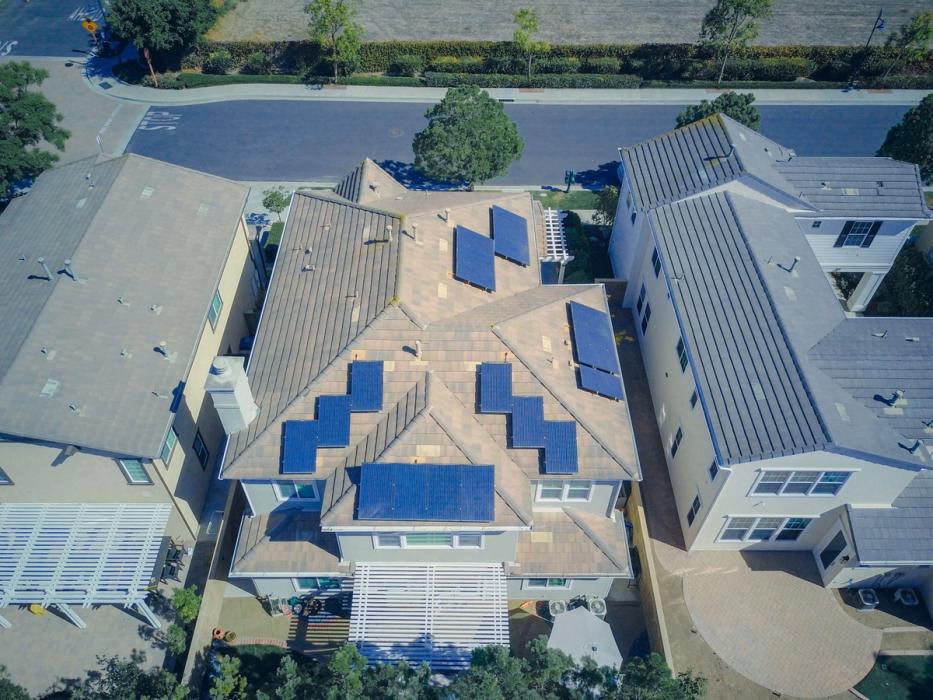
Less Accessible
While rooftop solar panels make the most of unused space, they’re also harder to access for installation and maintenance. For DIY projects, we recommend roof mounts for those who are physically capable and comfortable climbing on their roof. Also, you’ll need the proper safety equipment to complete the installation or conduct maintenance.
We suggest cleaning solar panels about once a year to remove dust and debris that could impact production. In this situation, it’s easier to clean and maintain ground mount systems than to break out the ladder and safety harness for a rooftop array.
Makes Roof Repairs Difficult
Roofing materials typically last a long time, but eventually, your roof will need repairs or replacement. Having a roof-mount solar system will make roof repairs more challenging.
If your roof has less than ten years of life left, we recommend that you replace the roof before you install solar panels.
Potential for Roof Leaks
Proper solar installation shouldn’t result in any issues or damage. However, roof-mount systems require drilling holes into your roof, so you risk causing roof leaks if something goes wrong.
Closing Thoughts
We hope this information helps you decide between ground-mount and roof-mount solar systems. If you’re still unsure which mounting system is best for you, get in touch with the pros at GoGreenSolar!
At GoGreenSolar, we provide complete solar systems, design and permitting services for residential and commercial solar projects. If you’re ready to go solar, contact us for a free design consultation. We can help you find the perfect solar kit or design a custom kit that fits your needs.


